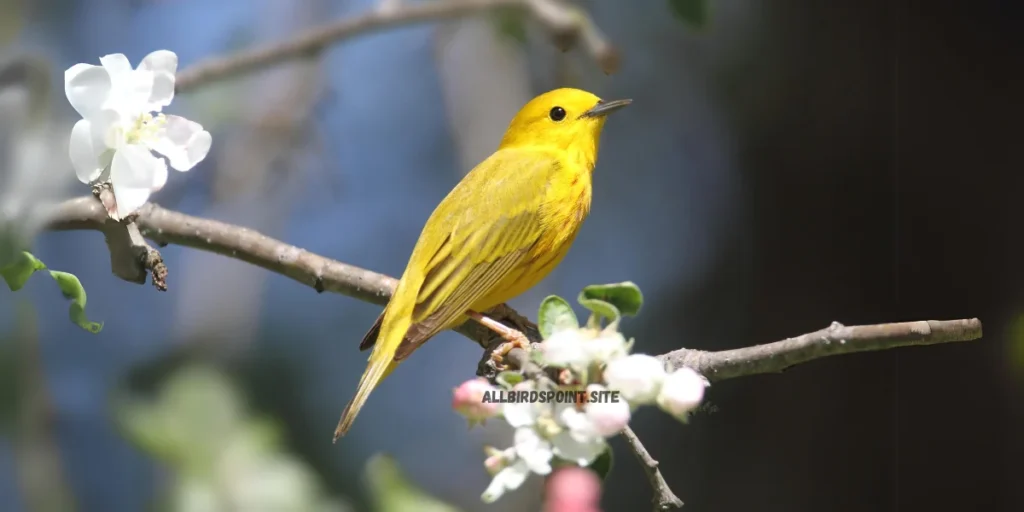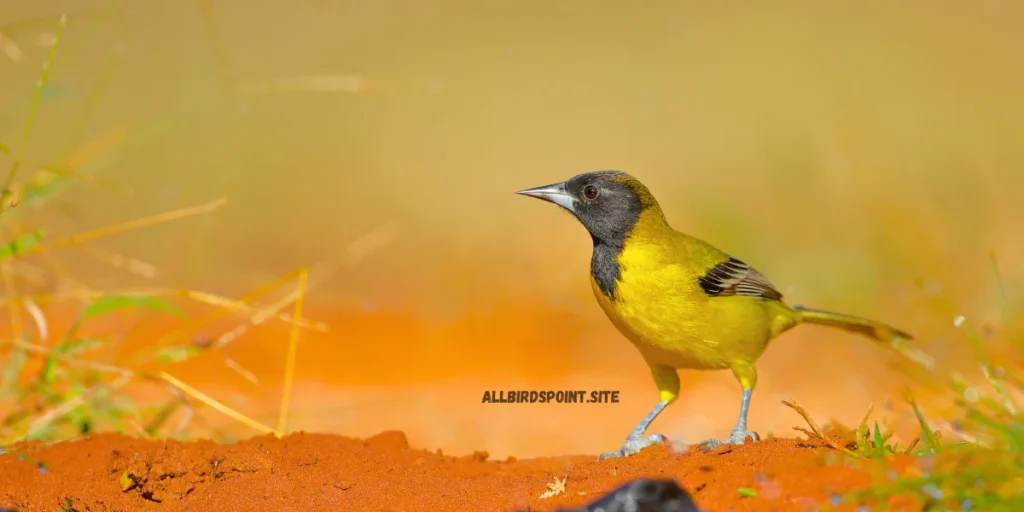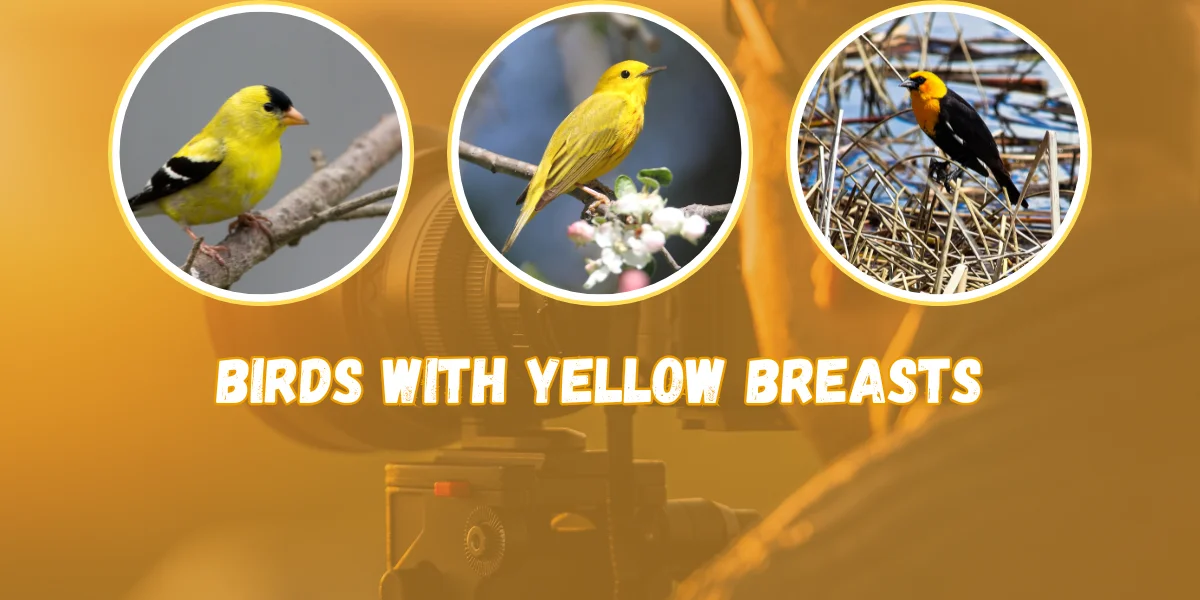Introduction: Why Yellow-Breasted Birds are Special
Small birds with bright yellow chests are some of the most beautiful and interesting birds to watch. They capture the attention of bird lovers everywhere because of their unique looks, songs, and behaviors. From the cheerful Yellow Warbler to the striking Audubon’s Oriole, these birds bring color and life to our world. In this guide, we’ll explore the different types of yellow-breasted birds, where they live, how they behave, and what we can do to help them. This information will help you understand these birds better and appreciate their important role in nature.
List of 20 Small Birds With Yellow Breasts
| No. | Bird Name | Distinctive Features | Region/Habitat |
|---|---|---|---|
| 1 | American Goldfinch | Bright yellow body, black wings and cap | North America, open fields, gardens |
| 2 | Yellow Warbler | Pure yellow with subtle red streaks on males | North and Central America, wetlands |
| 3 | Prothonotary Warbler | Bright yellow head and chest, blue-gray wings | Southeastern U.S., swampy forests |
| 4 | Audubon’s Oriole | Yellow body, black head | Texas and Mexico, woodlands |
| 5 | Yellow-Headed Blackbird | Yellow head and chest, black body | North America, wetlands |
| 6 | Yellow-Breasted Chat | Bright yellow chest, white belly | North America, dense shrubs |
| 7 | Western Tanager | Yellow body, red face (males), black wings | Western North America, forests |
| 8 | Common Yellowthroat | Olive back, bright yellow throat and chest, male black “mask” | North America, marshes |
| 9 | Eurasian Siskin | Yellow chest, greenish back | Europe and Asia, woodlands |
| 10 | Pine Warbler | Yellow chest, greenish back | Eastern North America, pine forests |
| 11 | Cape May Warbler | Yellow chest with darker streaks | North America, coniferous forests |
| 12 | Golden-Crowned Warbler | Yellow chest with golden crown stripe | Central and South America, forests |
| 13 | Yellow-Throated Warbler | Gray and yellow body with bright yellow throat | Southeastern U.S., forests |
| 14 | Masked Yellowthroat | Bright yellow chest, black mask (males) | Central and South America, wetlands |
| 15 | Saffron Finch | Vivid yellow chest and body | South America, tropical regions |
| 16 | Wilson’s Warbler | Yellow chest, small black cap on male | North and Central America, forests |
| 17 | Magnolia Warbler | Yellow chest with black streaks | North America, forests |
| 18 | Canada Warbler | Bright yellow chest, black “necklace” of streaks | North America, forests |
| 19 | Yellow-Bellied Flycatcher | Yellowish chest and belly | North America, boreal forests |
| 20 | Yellow-Rumped Warbler | Gray body with yellow chest patch | North America, varied habitats |
Key Traits of Yellow-Breasted Birds
These small birds with yellow chests share some common traits, like similar shapes and behaviors. Knowing what makes them unique can help you spot them more easily.
Physical Features
Yellow-breasted birds may be small, but they have certain characteristics that make them stand out:
- Size: They’re usually bigger than sparrows but smaller than robins, making them just the right size for easy spotting. They’re not too big or too small, and they move quickly.
- Colors: The yellow chest is the main feature, but they may also have green, olive, or black feathers. Males, especially during the mating season, often have brighter colors, while females may be duller in color to help them stay safe from predators.
| Bird | Size | Color | Special Traits |
|---|---|---|---|
| American Goldfinch | 4.5 – 5.5 in | Bright yellow chest, black wings | Cone-shaped beak, cheerful singing |
| Yellow Warbler | 4.5 – 5.5 in | Pure bright yellow body | Thin body, sings a happy song |
| Prothonotary Warbler | 5.5 – 6.5 in | Yellow chest, blue-gray wings | Nests in tree holes, bold personality |
| Audubon’s Oriole | 7.5 – 9 in | Bright yellow body, black head | Friendly and social, unique call |
| Yellow-Headed Blackbird | 7.5 – 9 in | Yellow head, dark body | Loves to gather in groups, special calls |

Unique Behaviors
These birds are not just pretty to look at—they also have fascinating behaviors that make them easier to identify.
- How They Eat: Many yellow-breasted birds eat insects, seeds, and fruits. Some birds, like the Yellow-breasted Chat, use their feet to hold their food while they eat.
- Breeding Displays: Males often try to impress females by singing, showing off their bright colors, or doing little flight dances.
- Seasonal Adaptation: Some of these birds migrate when seasons change, moving to warmer places in the winter and back in the spring. They also change what they eat depending on what’s available.
Popular Yellow-Breasted Birds
Yellow-breasted birds are found all over, from forests to urban areas. Here’s a look at some of the most popular ones, with information about their habits and where they live.
Yellow Warbler
- Scientific Name: Setophaga petechia
- Size: 12–13 cm (4.7–5.1 in)
- Weight: 9–11 g (0.32–0.39 oz)
- Lifespan: 4–10 years

The Yellow Warbler is a favorite among birdwatchers. Its pure yellow feathers and sweet, happy song make it easy to spot. This bird loves to live near water in bushes or small trees, and it mostly eats insects. The male Yellow Warbler is bright yellow with a few reddish streaks, while the female has softer colors.
- Where It Lives: Shrubby areas near water, like rivers or ponds
- Diet: Mostly insects, with some berries when available
- Special Behavior: Males sing a lot during mating season to attract females and protect their territory.
Prothonotary Warbler
- Scientific Name: Protonotaria citrea
- Size: 13–14 cm (5.1–5.5 in)
- Weight: 12–16 g (0.42–0.56 oz)
- Lifespan: 8–10 years

The Prothonotary Warbler has a bright yellow chest and head, with wings that are a grayish-blue. It lives in the wet, forested areas of the southeastern United States. This bird is bold and nests in tree holes near water, which is unusual for a warbler.
- Where It Lives: Swamps, wet forests, and near rivers
- Diet: Insects, spiders, and sometimes small water creatures
- Special Behavior: Known for nesting in tree holes and competing with other birds for these spaces.
Audubon’s Oriole
- Scientific Name: Icterus graduacauda
- Size: 19–23 cm (7.5–9 in)
- Weight: 44–47 g (1.6–1.7 oz)
- Lifespan: Up to 10 years

The Audubon’s Oriole stands out with its yellow body and black head. It lives in southern Texas and Mexico, usually in thick, wooded areas. It eats fruits, insects, and even small animals sometimes. This bird is friendly and often stays in small groups, making it fun to watch.
- Where It Lives: Woodlands and semi-dry areas
- Diet: Fruits, insects, and small animals
- Special Behavior: Known for its gentle nature and musical calls, this bird stays in one area year-round.
Where Yellow-Breasted Birds Live
Yellow-breasted birds are found in a variety of places, from wetlands and forests to urban gardens. They choose habitats that have plenty of food, shelter, and protection.
Common Habitats:
- Near Rivers (Riparian Zones): Birds like Yellow Warblers prefer areas near water where there’s plenty of plant life and insects.
- Wetlands: Marshes and swamps are perfect for birds like the Prothonotary Warbler that need water-rich environments for nesting.
- Urban Parks: Some yellow-breasted birds, like the American Goldfinch, do well in city parks and gardens where they can find food and shelter.
| Habitat | Typical Birds Found | Special Features |
|---|---|---|
| Riverbanks | Yellow Warbler, Yellow-Breasted Chat | Lush plants, plenty of insects |
| Wetlands | Prothonotary Warbler | Trees and water areas for nesting and food |
| Urban Parks | American Goldfinch | Easy access to food sources like feeders |
| Coastal Areas | Yellow-Headed Blackbird | Important stopover during migration |
How Yellow-Breasted Birds Behave
Learning about the behavior of yellow-breasted birds can help you identify them and understand their role in the environment. These birds have unique ways of finding food, mating, and surviving through the seasons.
How They Find Food
Most yellow-breasted birds eat a mix of insects, seeds, and fruits. In summer, they eat more insects, which are high in protein and help them during the breeding season. In winter, they switch to fruits and seeds. For instance:
- Yellow Warblers catch insects on the fly, hopping from branch to branch to find their food.
- Yellow-breasted Chats use their feet to hold their food, making it easier to eat different types of insects and berries.
How They Mate
Male yellow-breasted birds often put on a show to attract females. They might sing, show off their feathers, or perform flight displays. For example:
- Yellow-breasted Chats have a large song collection, sometimes with over 100 different sounds. Males even do a “dance” in the air, moving slowly with dangling legs to impress the females.
Tips for Watching and Identifying Yellow-Breasted Birds
Identifying yellow-breasted birds is easier when you know what to look for. Here are some basic tools and tips to make your birdwatching experience more enjoyable.
Birdwatching Essentials
- Binoculars: A lightweight pair of binoculars with good magnification (like 8x or 10x) can help you see small birds up close.
- Bird Guides and Apps: Field guides or apps like Merlin Bird ID can help you quickly identify birds based on their colors, sounds, and where they live.
- Notebook: Recording what you see in a small notebook helps you keep track of different birds and their behaviors.
Key Identification Tips
- Look at Size and Shape: Take note of the bird’s size and overall shape. Is it bigger or smaller than a sparrow? Does it have a long tail or a rounded body?
- Watch How It Moves: Each bird has its own way of moving, eating, or singing. Some birds hop, while others glide from branch to branch.
- Seasonal Changes: Spring and fall are the best times to see migrating yellow-breasted birds. Early mornings or late afternoons are usually the best times of day for birdwatching.

Tips for Taking Great Photos of Yellow-Breasted Birds
Capturing clear photos of yellow-breasted birds takes patience and the right equipment. Here are a few simple tips to help you get great shots:
- Choose the Right Lens: An 800mm lens is great for long distances, but a 400mm lens works well if you’re closer.
- Use Natural Light: The best times to take photos are early in the morning or late in the afternoon when the light is soft and warm.
- High Shutter Speed: Birds move quickly, so a fast shutter speed (like 1/1000 second) will help you get sharp images without blur.
How We Can Help Protect Yellow-Breasted Birds
Yellow-breasted birds are facing challenges like habitat loss, pollution, and climate change. These issues can make it harder for them to find food, shelter, and safe places to live. Here are some simple things we can do to help protect them:
- Support Conservation Groups: Organizations like the Audubon Society work to protect bird habitats and make policies to keep birds safe.
- Make Your Yard Bird-Friendly: Adding a bird feeder, birdbath, and some bushes or trees can make your yard a good spot for birds to visit.
- Raise Awareness: Share information about why it’s important to protect green spaces, reduce pollution, and support planting more trees.
Conclusion: Why Yellow-Breasted Birds Matter
Small birds with yellow chests bring color and joy to our lives and are a big part of nature’s balance. Watching and learning about these birds can help us connect more deeply with nature and appreciate its beauty. By doing our part to protect their homes and habitats, we help ensure that future generations can enjoy their bright colors and cheerful songs. Whether you’re new to birdwatching or a seasoned expert, this guide is a great start to understanding, appreciating, and protecting these beautiful yellow-breasted birds.
FAQs
Q1: What are some common small birds with yellow breasts?
A: Popular species include the Yellow Warbler, American Goldfinch, Prothonotary Warbler, and Audubon’s Oriole.
Q2: Why do some birds have yellow chests?
A: Yellow plumage helps birds attract mates, especially in males during the breeding season.
Q3: Where can I find yellow-breasted birds?
A: These birds are commonly found in wetlands, forests, open fields, and even urban parks, depending on the species.
Q4: How can I identify yellow-breasted birds?
A: Look for size, shape, color patterns, and behaviors. Using bird guides or apps can also help with quick identification.
Q5: Are yellow-breasted birds migratory?
A: Many, like the Yellow Warbler, migrate seasonally, moving to warmer regions in winter.
Q6: What do yellow-breasted birds eat?
A: Their diet includes insects, seeds, and fruits, changing with the seasons.
Q7: How can I attract yellow-breasted birds to my garden?
A: Plant native shrubs, provide a water source, and set up bird feeders with seeds to attract them.

1 thought on “Small Birds With Yellow Breasts: Details, List & Photos”